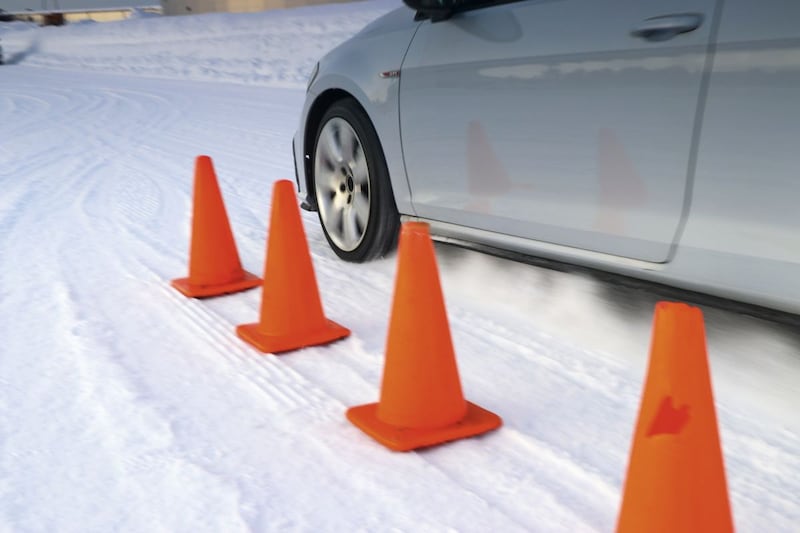
One of the main reasons for using winter tires is the shorter braking distance. On a winter road surface, the braking distance of a car with winter tires is considerably shorter than that of a car with summer tires. This means that you are better prepared for unforeseen traffic conditions and therefore drive more safely. But what exactly does a braking distance mean? What is the difference in braking distance on summer and winter tires?
Before we start with the difference in braking distance between winter tires and summer tires, it is wise to first have a clear idea of what exactly is meant by a braking distance. The braking distance is understood to mean: the distance a car travels from the moment the brake is applied to the moment the car has come to a complete stop. The shorter this distance is, the faster you stop and the better you can avoid accidents. If you use tires that shorten the braking distance, you are safer on the road.
Difference between winter tires and summer tires
Winter tires have more profile than summer tires and consist of a softer rubber compound. These two factors give the winter tires more grip on slippery road surfaces. It is also these factors that give summer tires more grip on ‘normal’ asphalt. The use of winter tires is not mandatory in the Netherlands, but is strongly recommended. And if you look at the braking distance of winter tires on smooth asphalt, you know exactly why. There are more reasons to use winter tires.
Difference in braking distance on winter tires in snow
Driving on snowy roads requires an adapted driving style anyway – even with winter tires. Because snow-covered roads are slippery, your braking distance is already a lot longer than on normal, dry asphalt. But if you look at the difference in braking distance with summer tires, you immediately see why winter tires are so recommended. In the Autoweek Tire Comparator you will find the properties of winter tires and summer tires.
If a car is traveling fifty kilometers per hour on a snowy road at a few degrees below zero, the braking distance on winter tires is somewhere between twenty and thirty meters. If you do the same on summer tires, you will only stop after about sixty meters. That’s a huge difference in braking distance, which can mean the difference between an accident or no accident. Or worse: life and death. Another example is in a test of the Audi A6 Avant 55 TFSIe vs the Volvo V90 T6 Recharge in March 2021 at 0 degrees. The Volvo on summer tires needs more than one and a half meters less than the Audi on winter rubber. So yes, a winter tire brakes better on snow, but not during the whole winter.
Which driver assistance systems help with slippery road conditions?
There are many electronic driver assistance systems that make driving on slippery roads safer. They all ensure that you are safer on the road in their own way. Which driver assistance systems make driving on slippery roads safer?
- ABS – The anti-lock braking system, also known as ABS, prevents your wheels from locking when braking hard. This means that you always maintain grip, even when you have to brake very hard. On slippery roads, the intervention of this system can sometimes feel quite abrupt, but don’t worry: this is part of it.
- TCS – Traction control, also known by the abbreviation TCS, is designed to prevent your wheels from spinning on slippery road surfaces. This makes it easier for you to drive off and you retain control of your car.
- ESP – The Electronic Stability Program (ESP) intervenes if it detects that the wheels suddenly lose traction, or that you lose control of the car. This is one of the most important tools in a car and has been mandatory for all new models for many years.
All these resources have been developed to make driving as safe as possible, especially in situations with reduced grip. Combine this with the use of winter tires and you will be as well prepared as possible on the road. Of course, that does not mean that you do not have to adjust your driving style if you drive on slippery roads. Even though electronic aids and special tires help enormously, it is still very important to take the circumstances into account. Slippery weather is treacherous and always will be.
In AutoWeek’s tire tests, you can always see the difference in performance between winter tires, summer tires and all-season tires.
– Thanks for information from Autoweek.nl